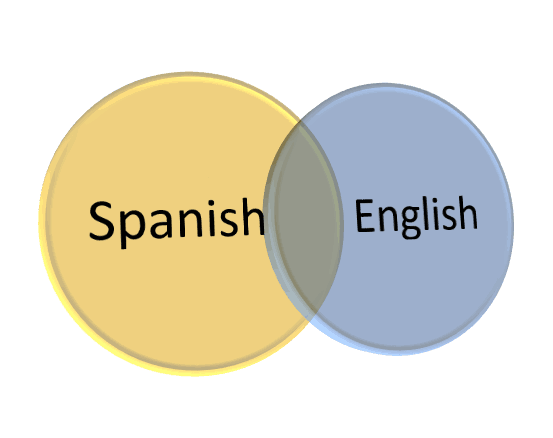Welcome back to our series on reducing those tricky, time-consuming unnecessary speech referrals! We’re three articles in now, and today’s topic is one that can make a big difference on the campuses you work at – helping teachers get a handle on understanding language differences so they can better support bilingual students.
Each year, classrooms get more diverse, and while that’s fantastic, it also means that teachers and SLPs often encounter languages and speech patterns they might not recognize. Picture this: you’ve got a student whose home language isn’t English. Maybe they’re mixing up sentence structure, skipping certain sounds, or speaking in a rhythm that’s unfamiliar. Naturally, the teacher is wondering: Is this a language difference, or is it a possible speech disorder? It’s a big question, and knowing the answer can save time, resources, and a whole lot of confusion.
Our goal in this series is to provide the tools and confidence to make the referral process less ambiguous, more accurate, and beneficial to everyone. Check at the links at the bottom to essays 1, 2, and 4. Let’s dig in!
Understanding Sound Differences to Support Bilingual Students
One of the biggest hurdles in identifying speech and language needs for bilingual students is knowing the similarities and differences between English and the student’s native language. If you read the second post in our series, we introduced the topic in an overview presentation you can give to the entire campus. However, when teachers ask specific questions about a specific language, it’s time to show them exactly what sounds are influenced by the home language and
Let’s say you’re working with a Spanish-speaking student who’s struggling with /v/ sounds in English. You might see them saying “bery” instead of “very” or “biolet” for “violet.” Spanish doesn’t have that /v/ sound, so this pattern actually makes perfect sense! With a Venn diagram, you can visually map out where these sound differences exist, making it much easier to know what’s typical and when a closer look might be needed.
It’s been our experience that teachers love this information. The conversation does not take a long time and it sets them up to help all their bilingual students. Need a blank Venn to map out different languages on the fly? We’ve got you covered! Download our free, customizable Venn diagram template, and use it with any languages you encounter, beyond the ones in our Difference or Disorder book and the charts in the World Language Library.

Key Linguistic Elements for Cross-Linguistic Analysis
It’s not all about sounds—sentence structure, grammar, and word usage matter too! Here are a few questions you might ask to understand how a student’s home language could influence their English:
- Word Order: Does their native language use the same sentence structure as English, or is it different?
- Articles: Are there words for “the” or “a,” and are they used in the same way?
- Possession: How does the language show possession? Is it with a possessive form, or is it worded differently?
- Verb Tenses: How are verb tenses marked, and are they used like they are in English?
- Questions: Are questions formed similarly, or do they follow different rules?
Notice that we took all the SLP words out of the teacher conversation. Set down the morpho-syntactical-pragmatical-attributes and stick to “grammar.” Seeing a student apply their home language’s patterns in English is often a clear sign of typical bilingual development, not a disorder.
Additional Resources for Exploring Language Differences
To dive even deeper into language comparisons, check out resources like Portland State University’s language page or the ASHA Multicultural site. While they may not have ready-made Venn diagrams or organized contrastive charts, they still provide valuable insights on typical versus atypical language patterns across a range of languages.
How Sharing Resources Reduces Unnecessary Referrals
Cultural and linguistic mismatches between teachers and students are a major source of unnecessary referrals, but by equipping teachers with easy-to-use resources to identify these differences, we empower them to make well-informed referral decisions. This leads to a major win: reduced time and effort spent on unnecessary referrals, freeing up special education services and funding for students who genuinely need them.
In the first post of this series, we shared ways SLPs can take an active role in the referral process, including our free, interactive referral packet that includes quick data sheets for teachers to gather valuable insights about their students’ speech patterns.
More Ways to Support Bilingual Learners
Teachers need professional development too. And there are a number of groups that provide online courses and resources that are specifically tailored to their needs and experience. Share these resources with your teacher:
1. Colorín Colorado
- Description: A comprehensive resource for educators and families of English language learners (ELLs), Colorín Colorado offers professional development webinars, toolkits, and articles on bilingual education and literacy.
- Website: Colorín Colorado
2. WIDA (World-Class Instructional Design and Assessment)
- Description: WIDA provides research-based resources, training, and standards for teachers working with multilingual learners. They offer in-person workshops, eLearning modules, and virtual academies focusing on language acquisition and bilingualism.
- Website: WIDA
3. Center for Applied Linguistics (CAL)
- Description: CAL offers professional development programs and resources on dual language education, bilingual program implementation, and effective teaching strategies for multilingual students. Their training is available through webinars, on-site workshops, and customized programs.
- Website: Center for Applied Linguistics
By building a collaborative, informed approach, we can better support bilingual students and make decisions that truly reflect each child’s unique language abilities. For those interested in exploring this topic further, checkout the other three essays in this series:
- Being involved in the referral process to help teachers collect good data
- Sharing our knowledge about bilingual development with our fellow educators (this post)
- Giving teachers the resources they need to gather meaningful data (this post)
- Getting quality information from parents


